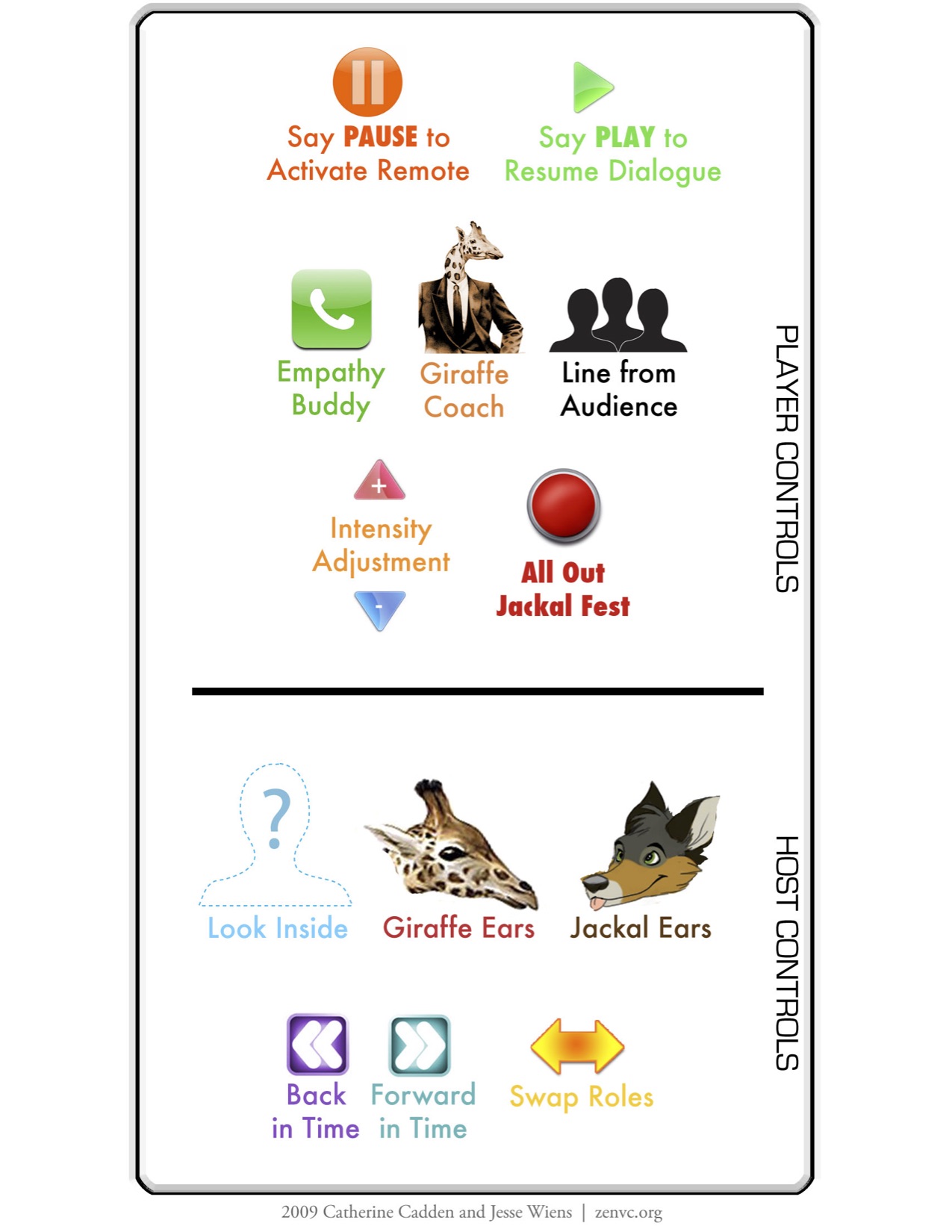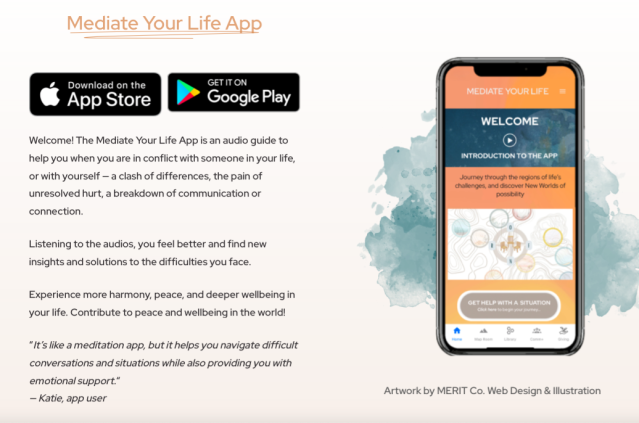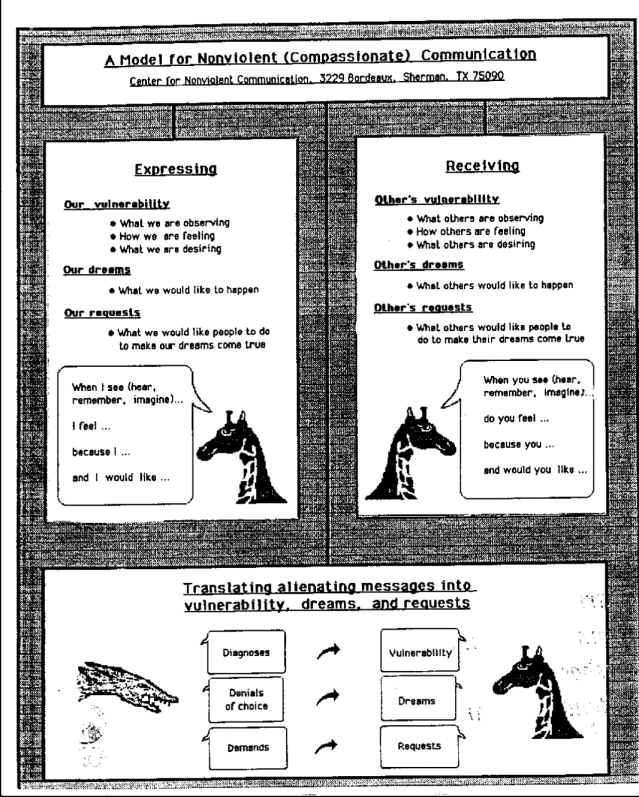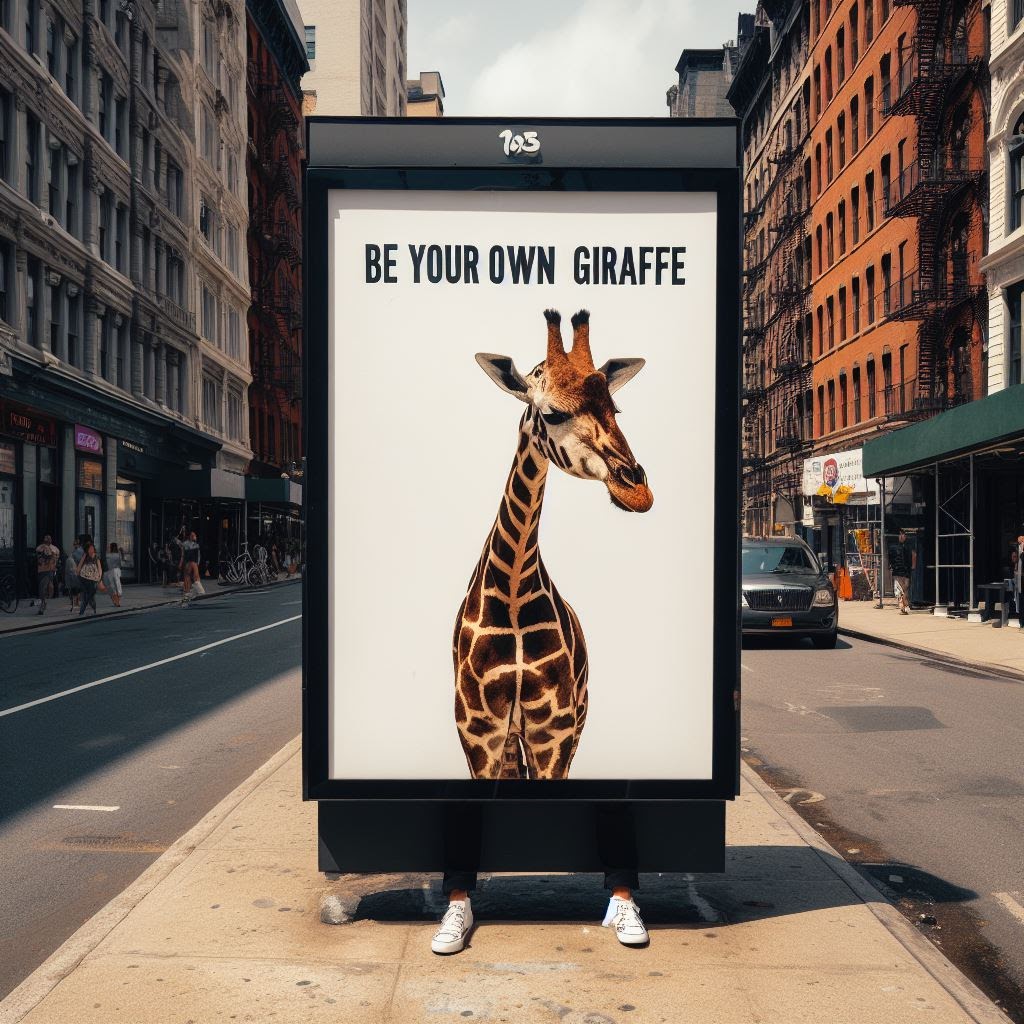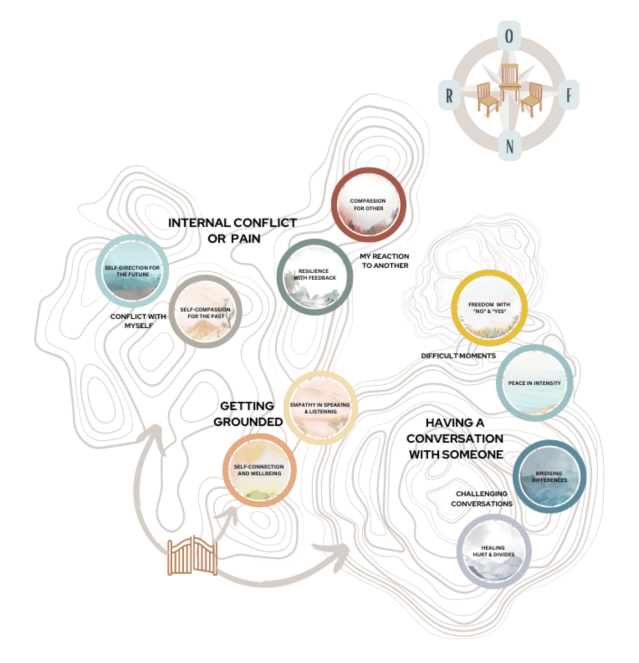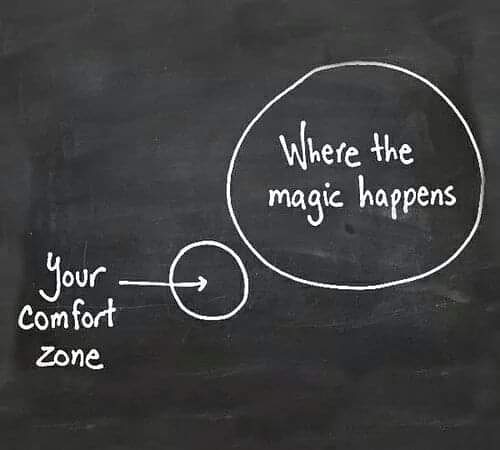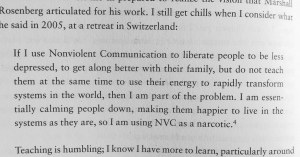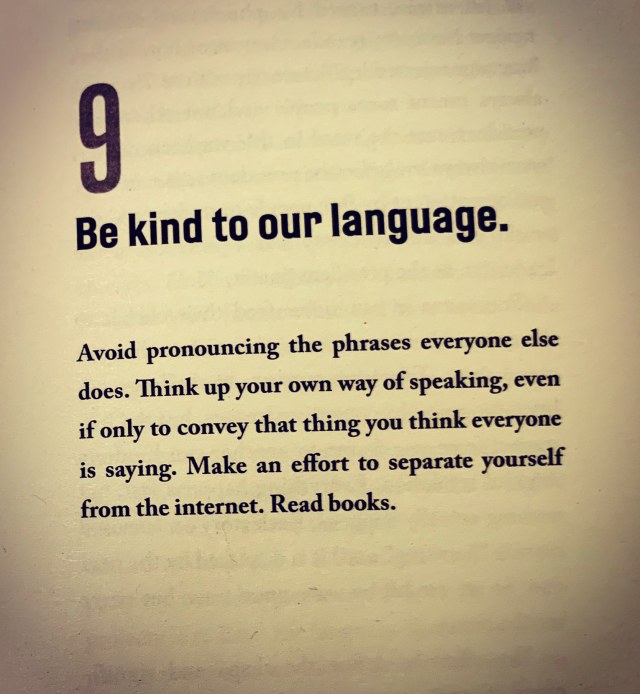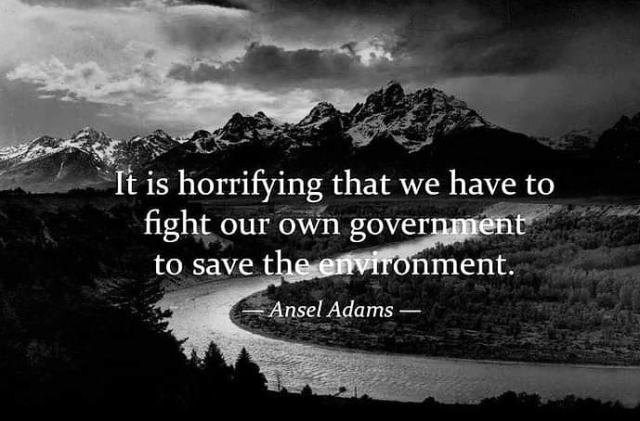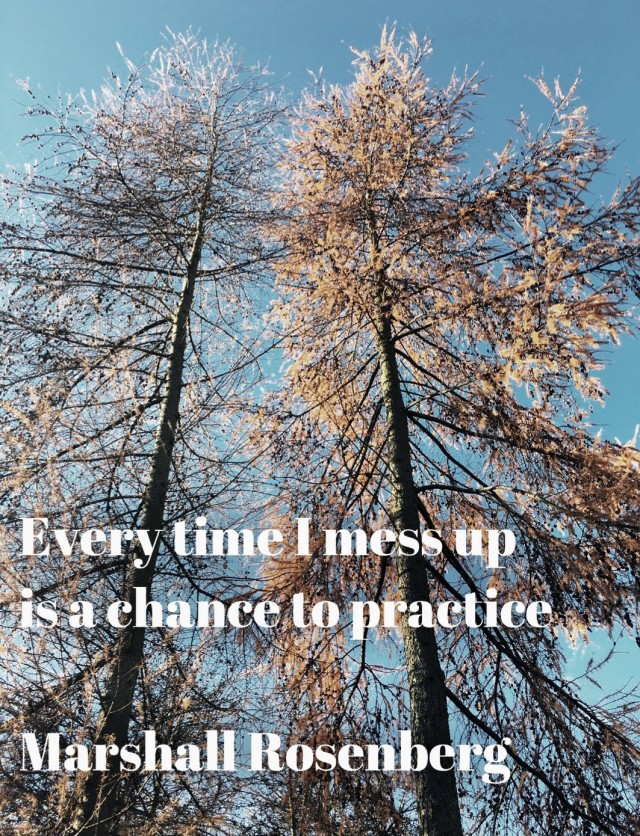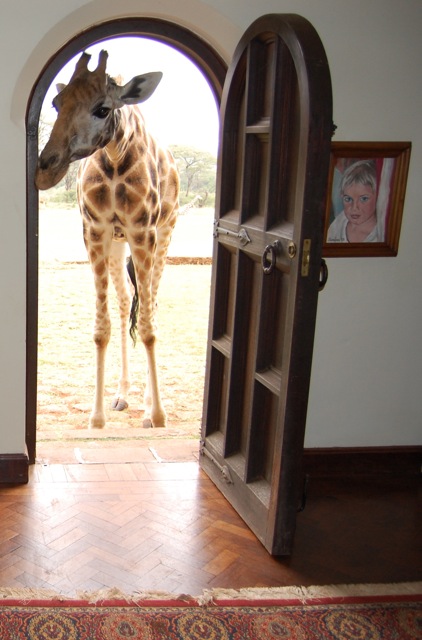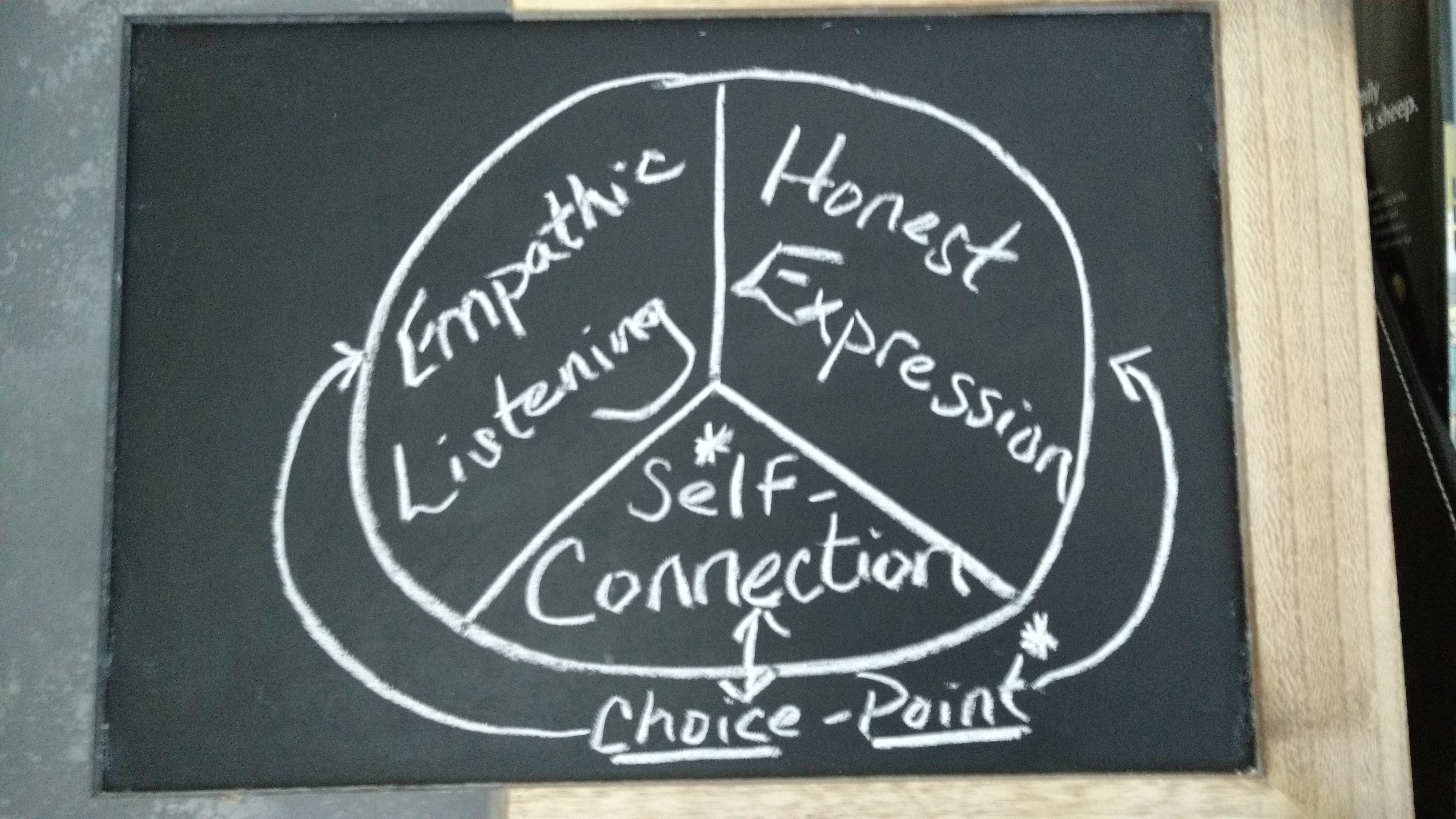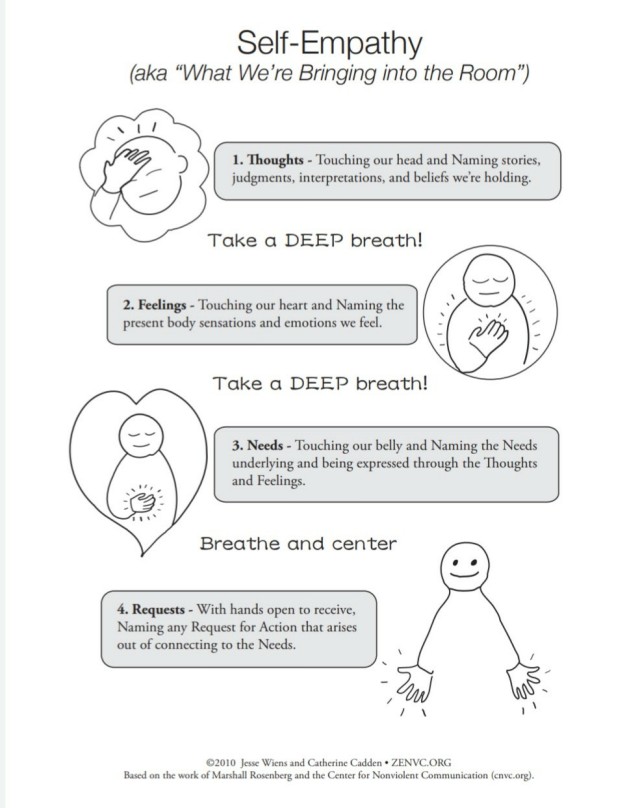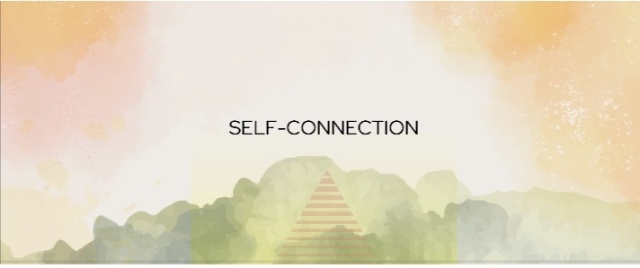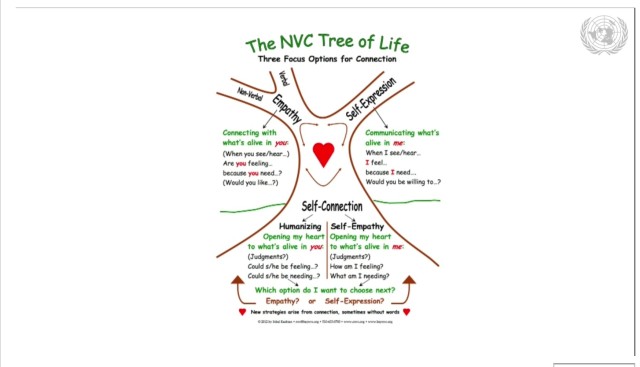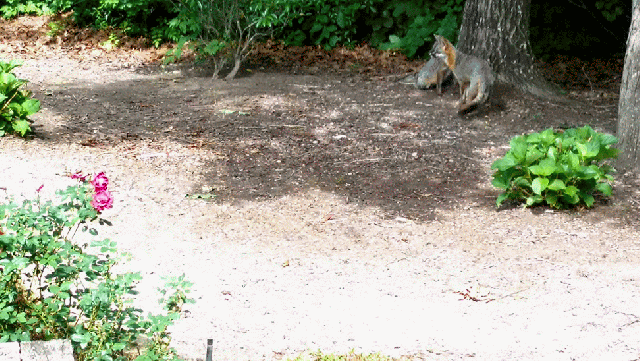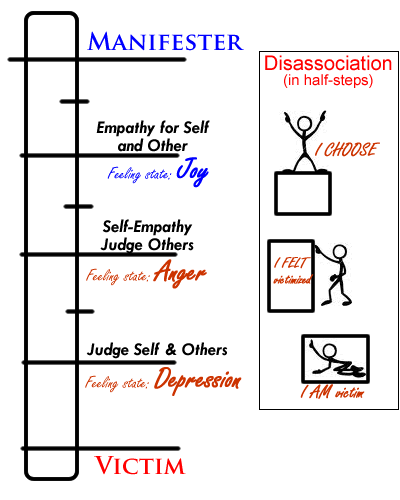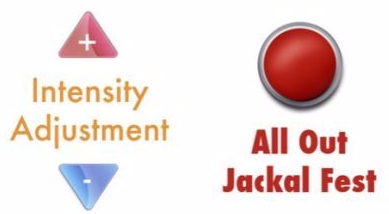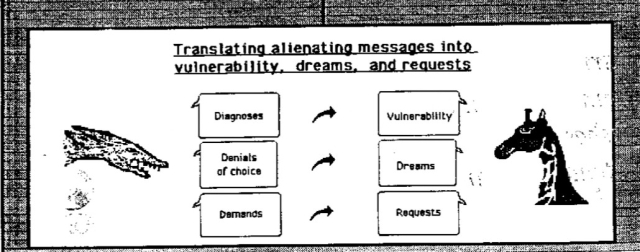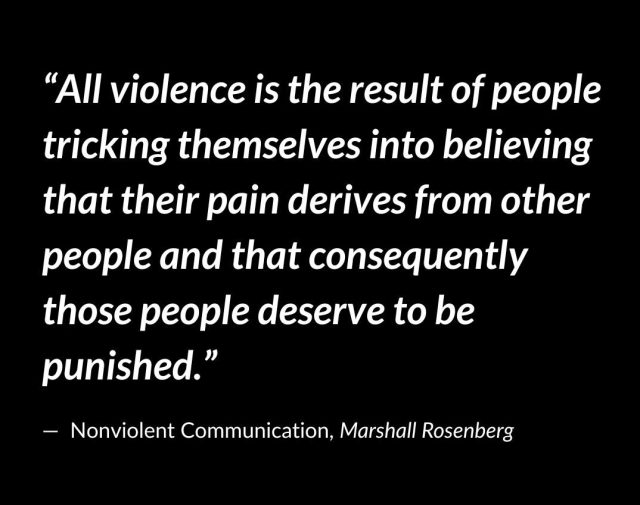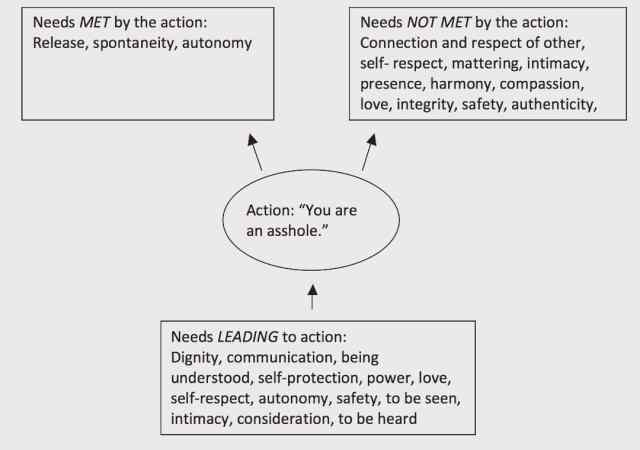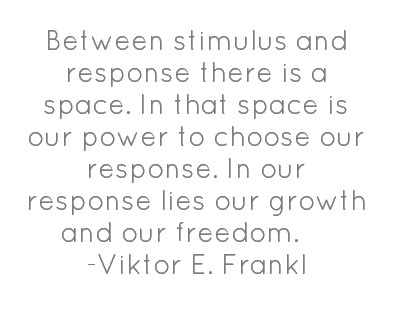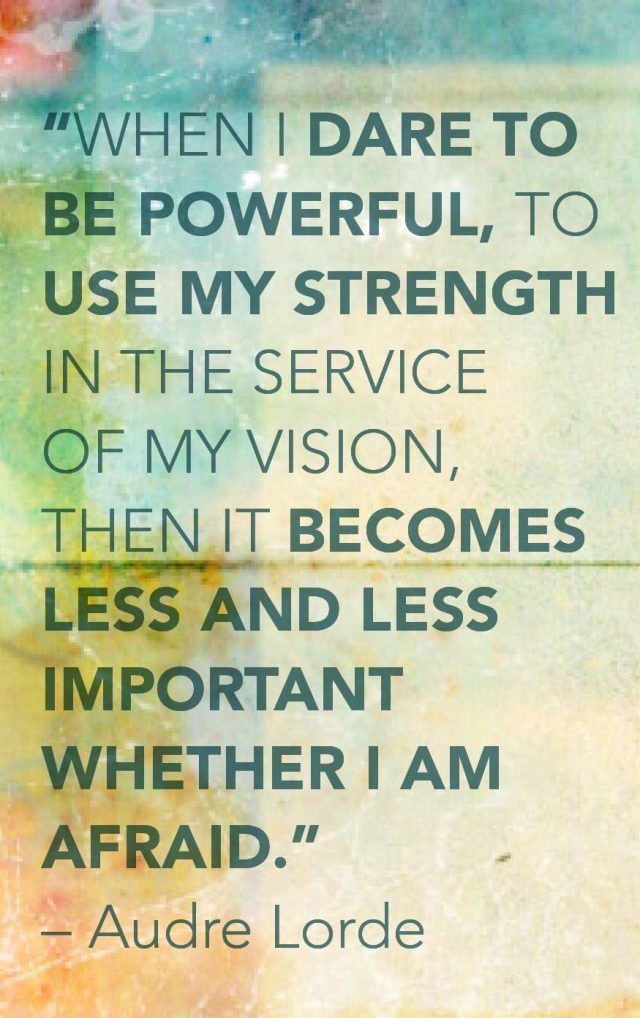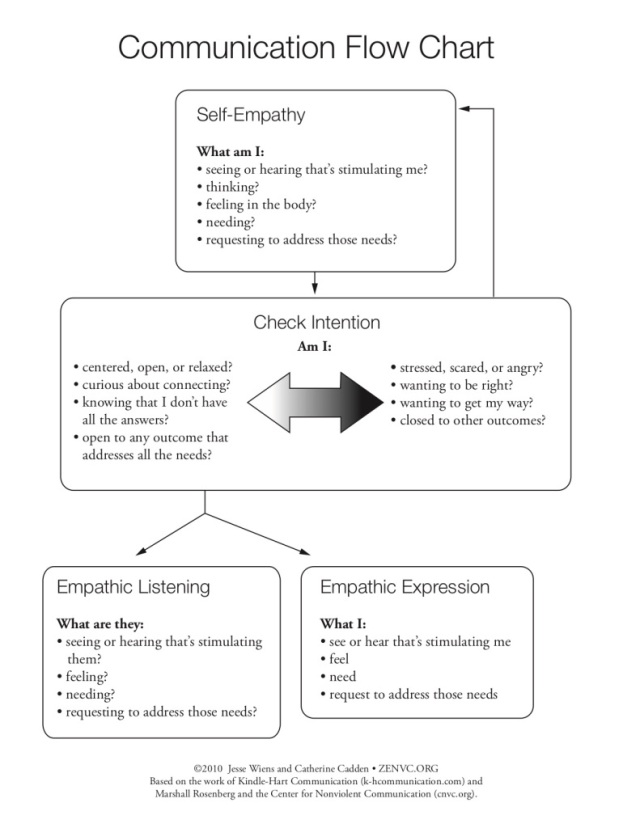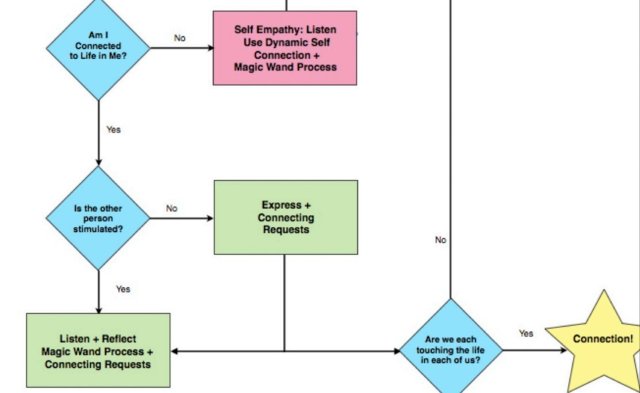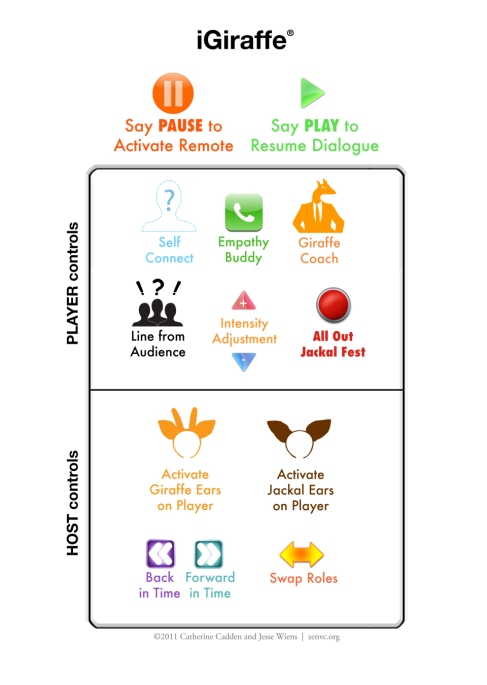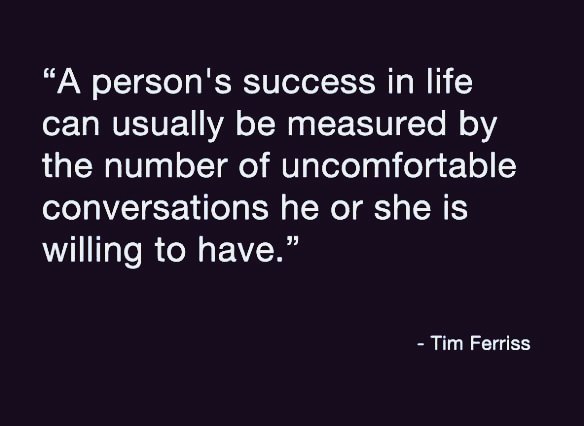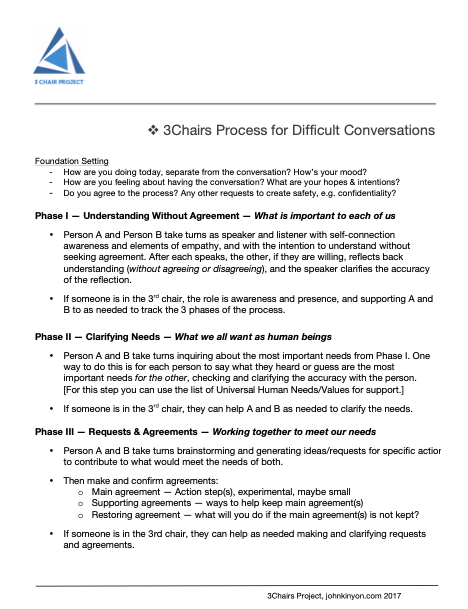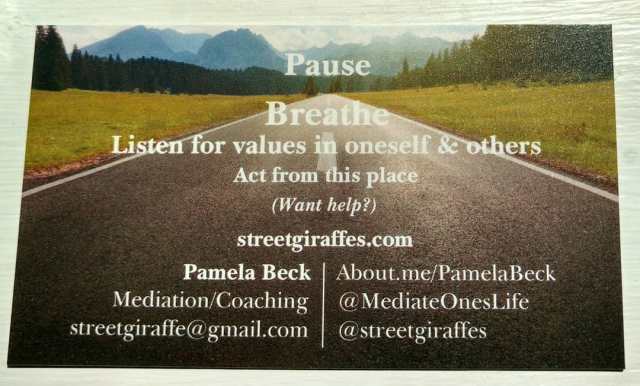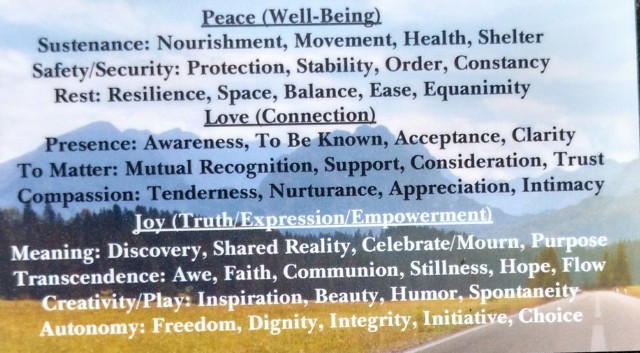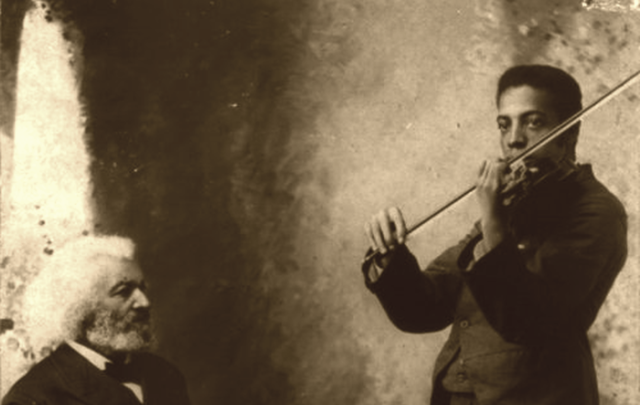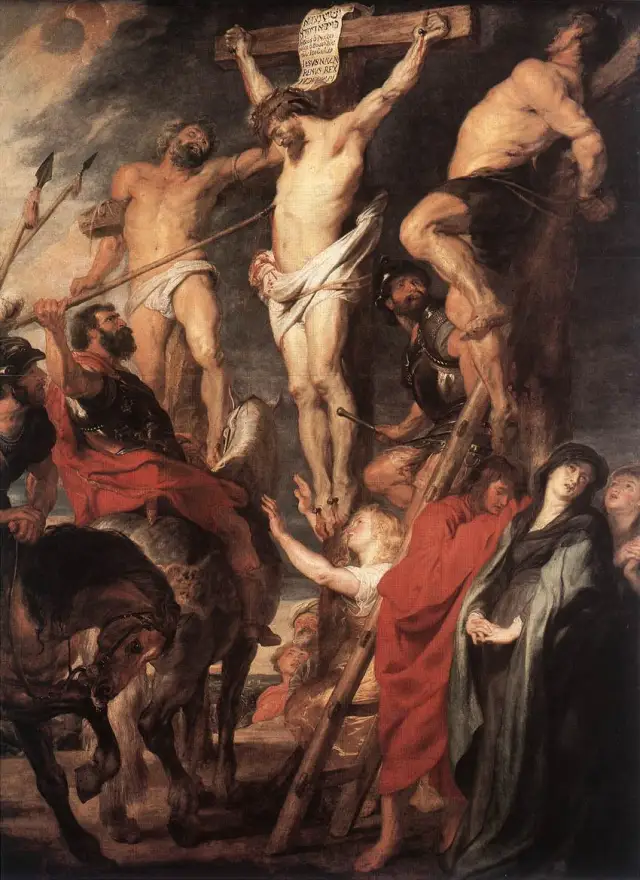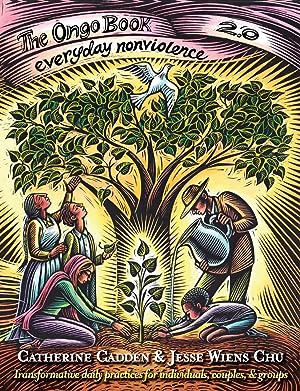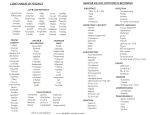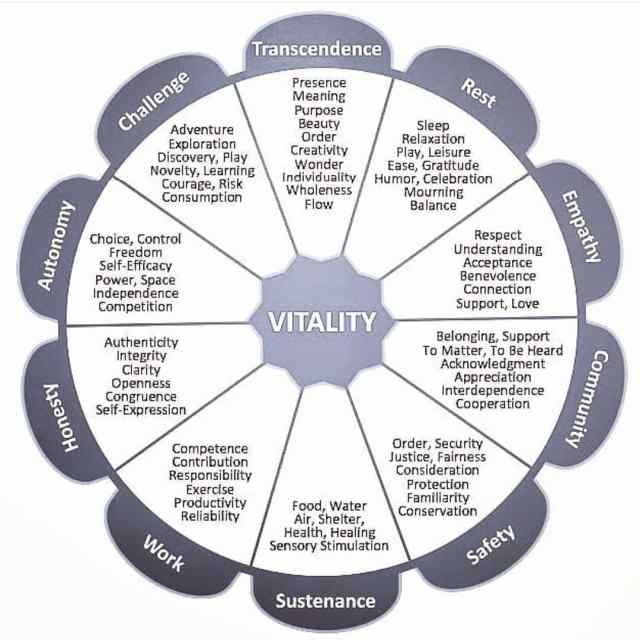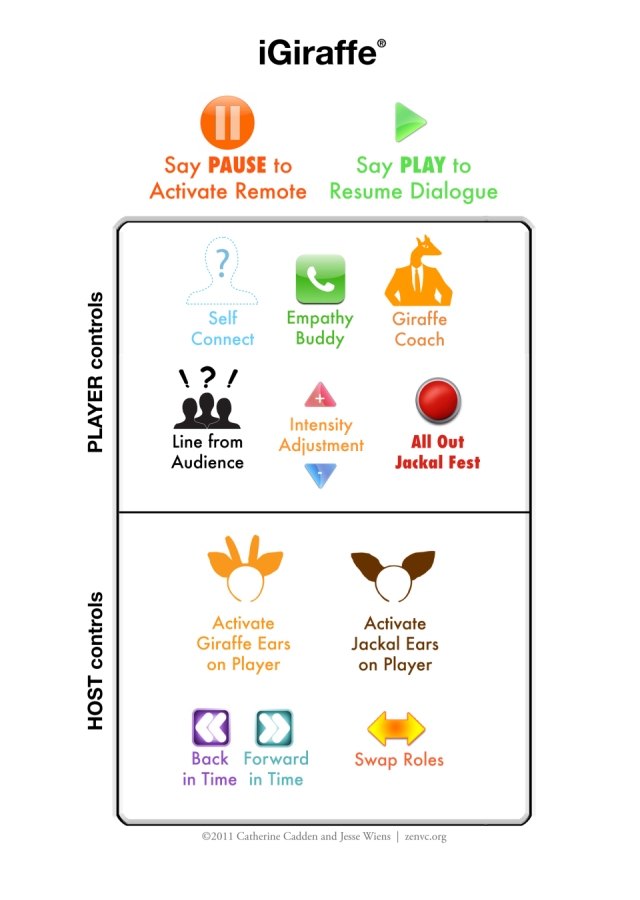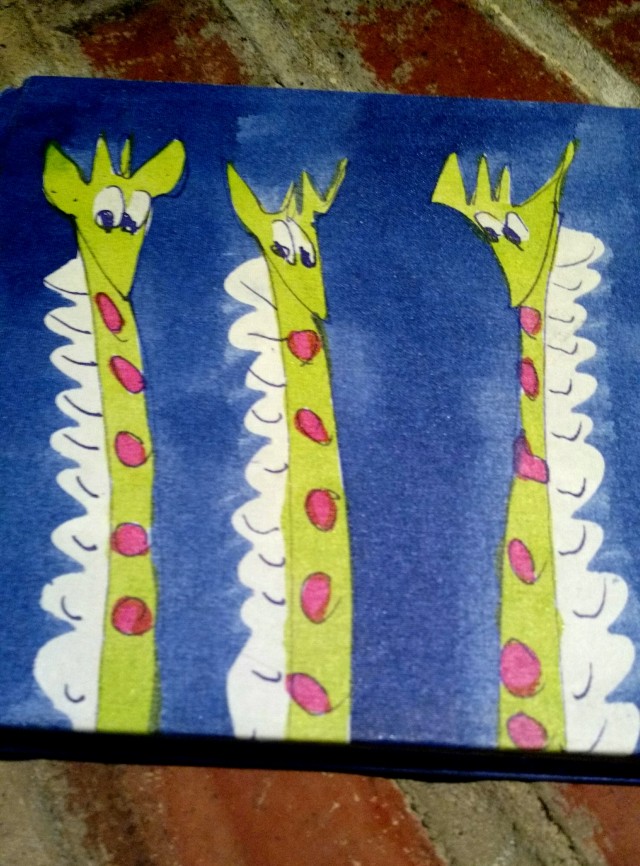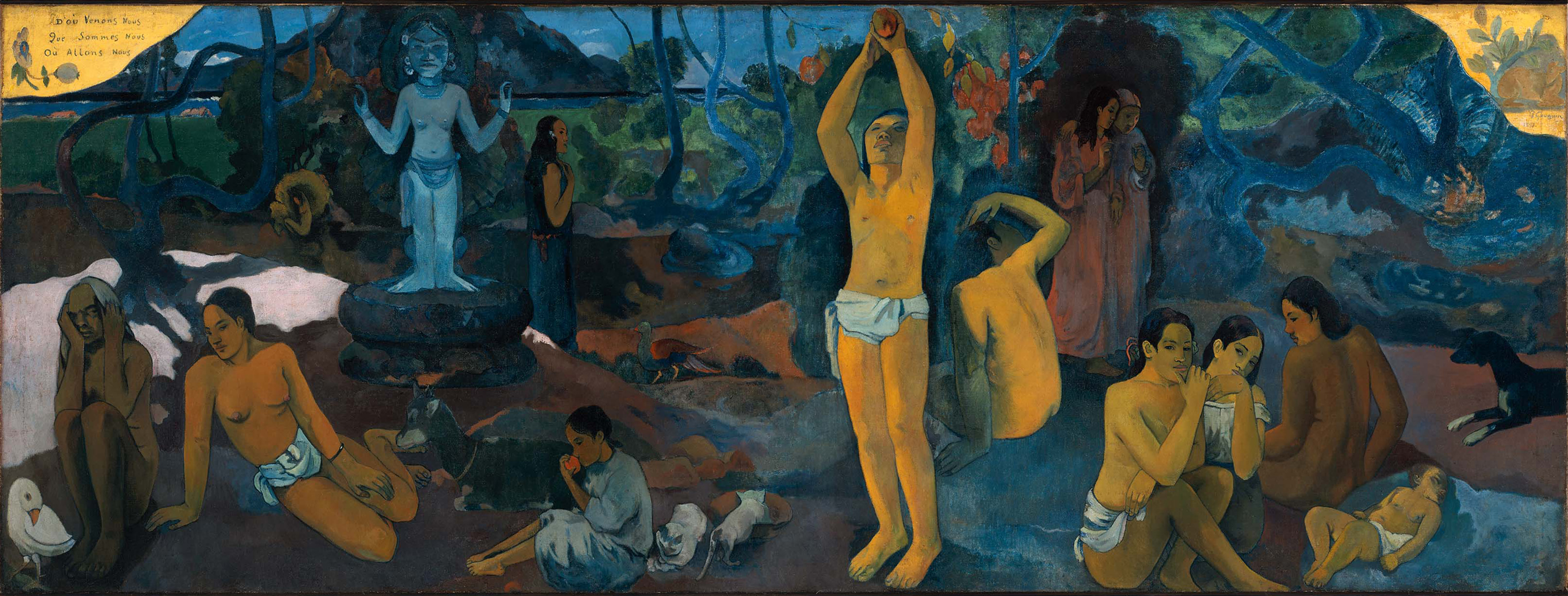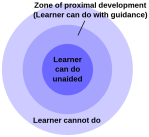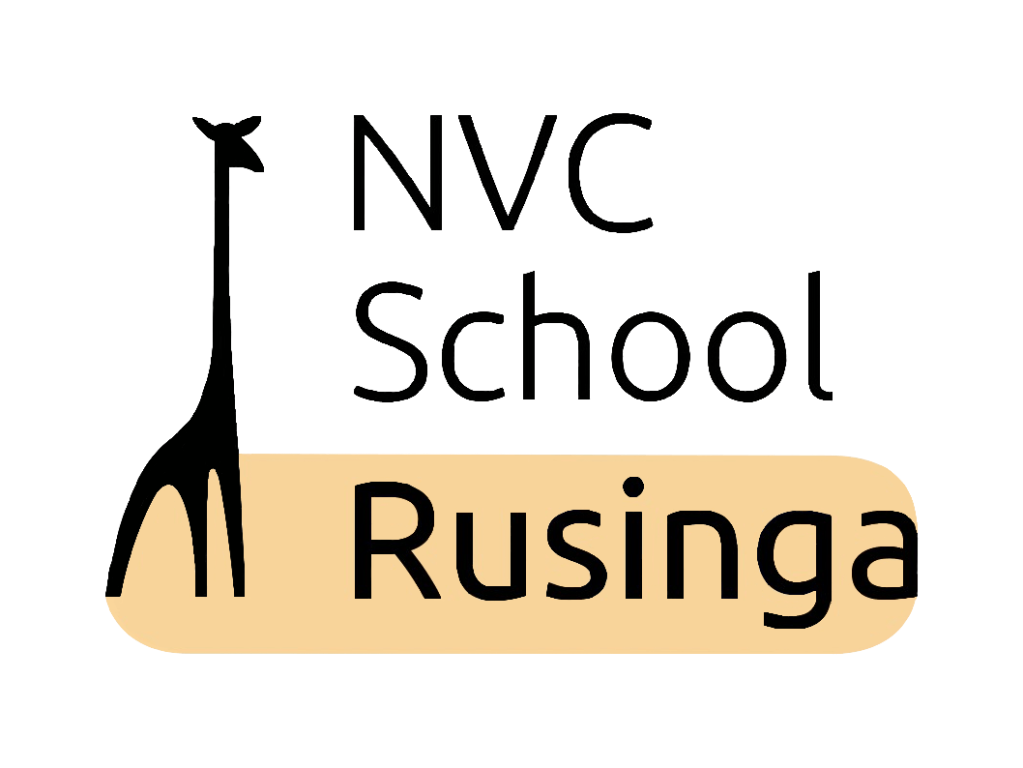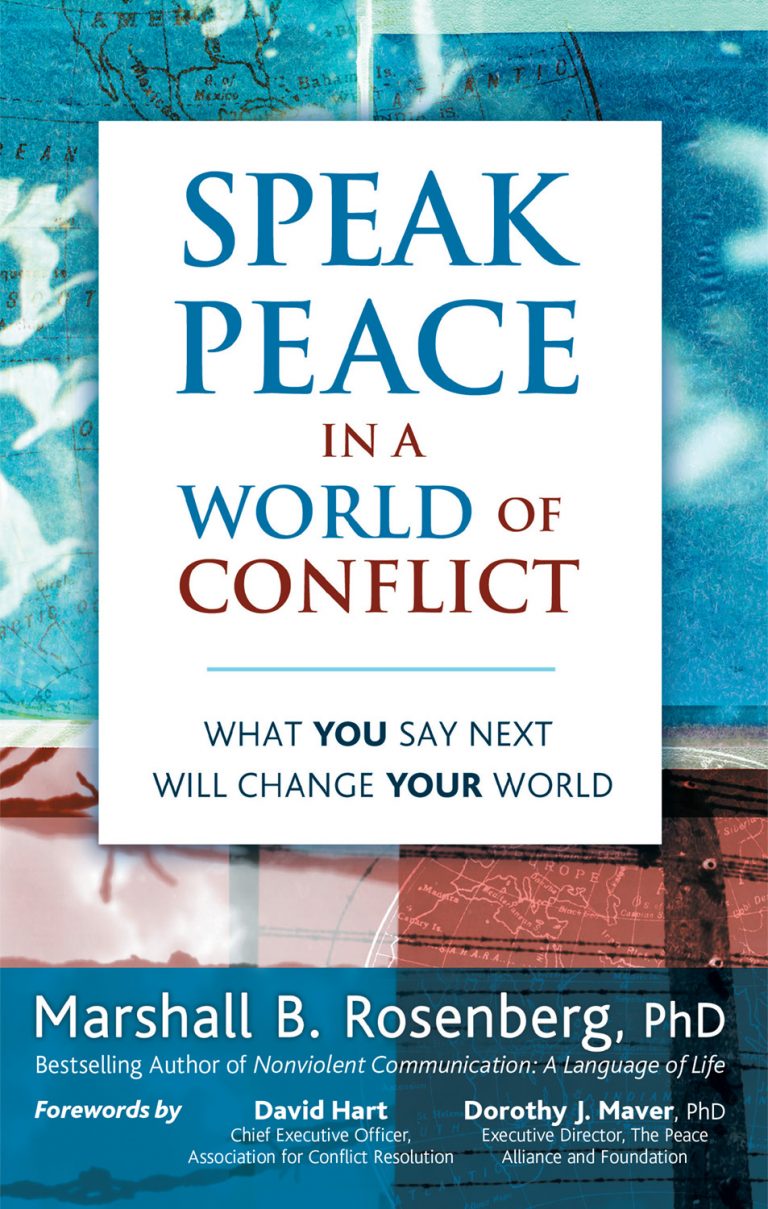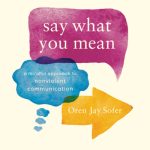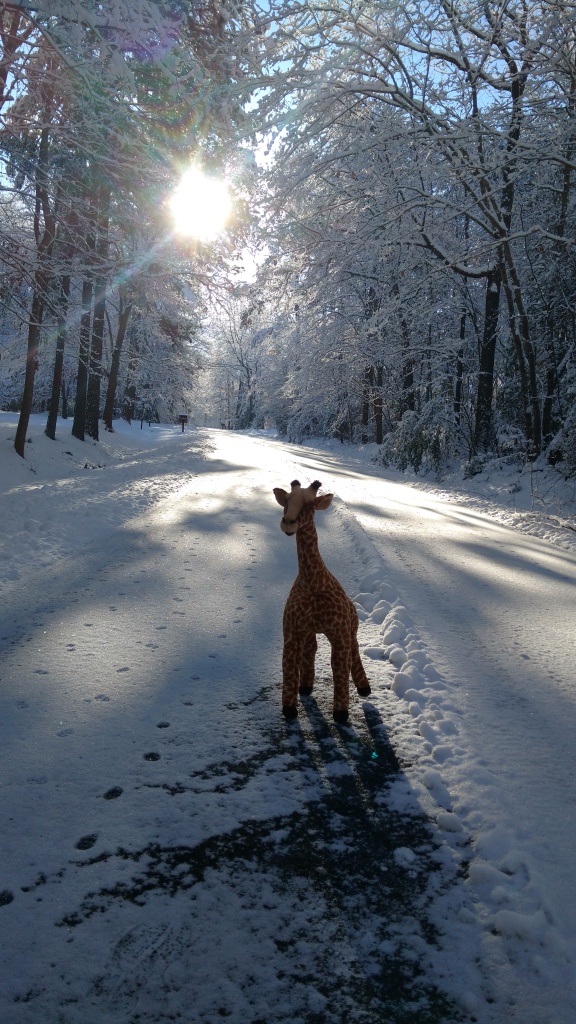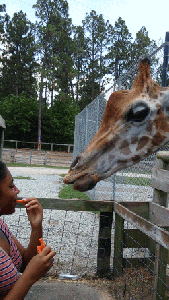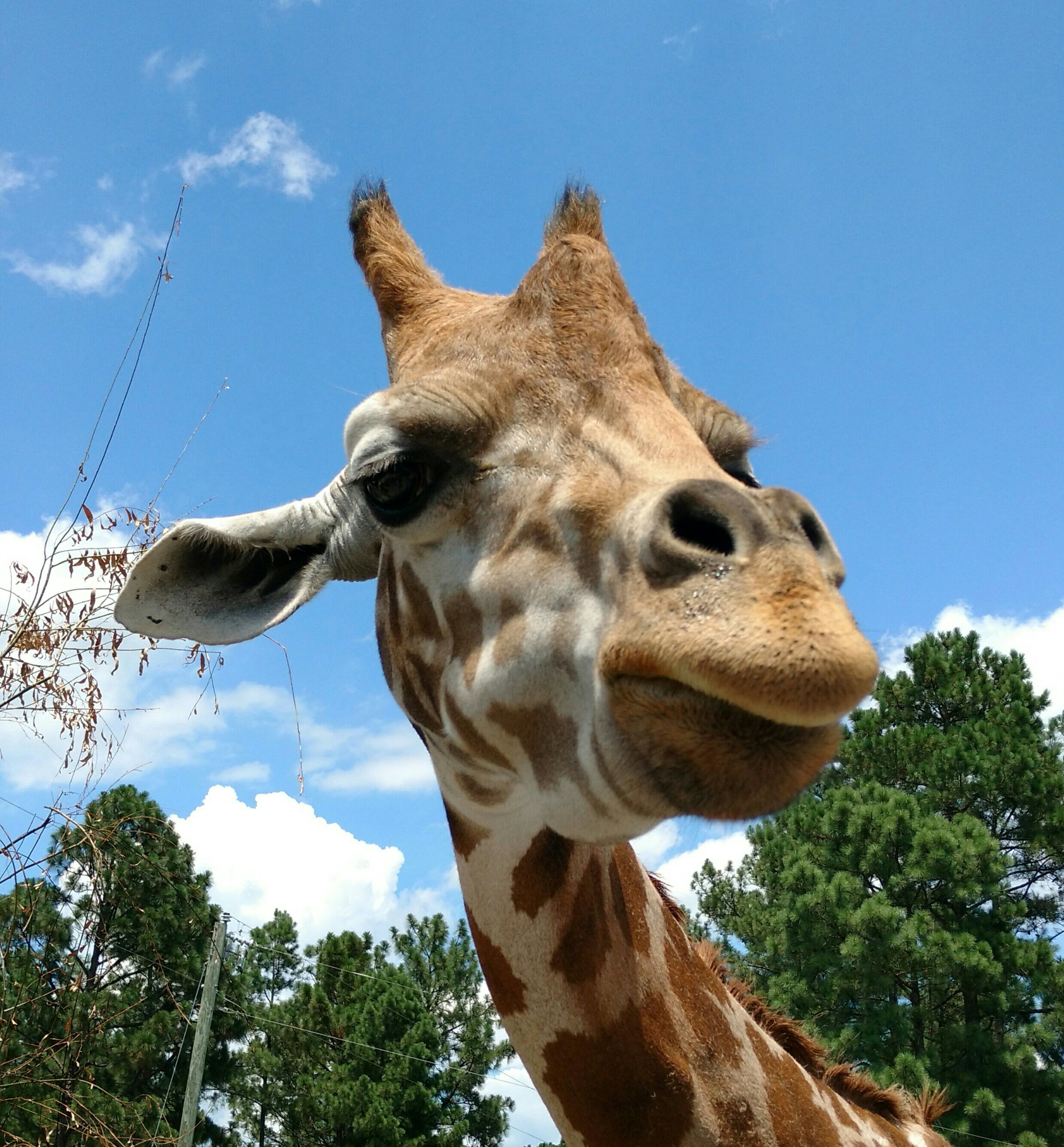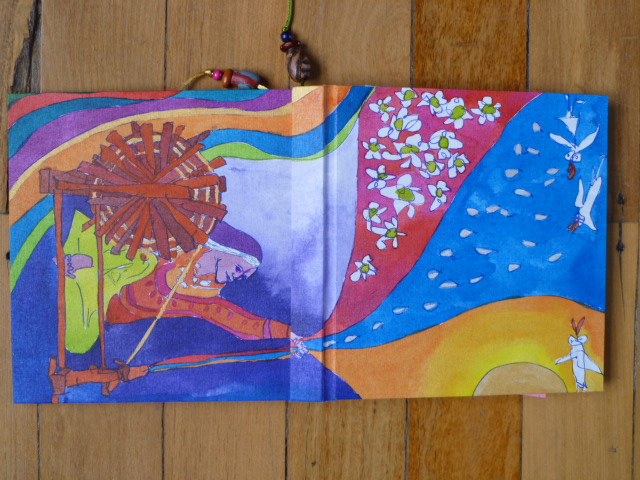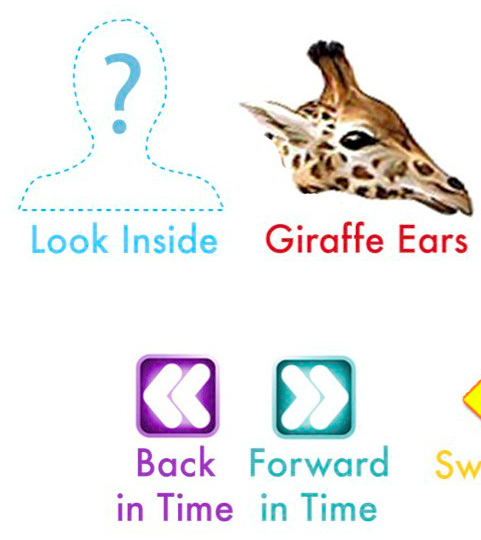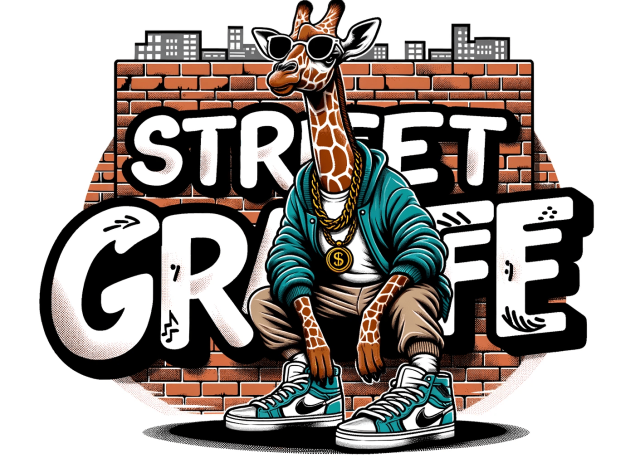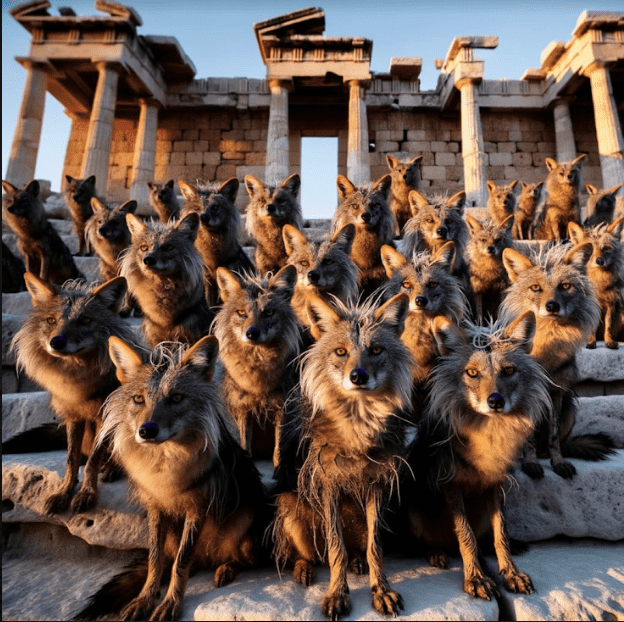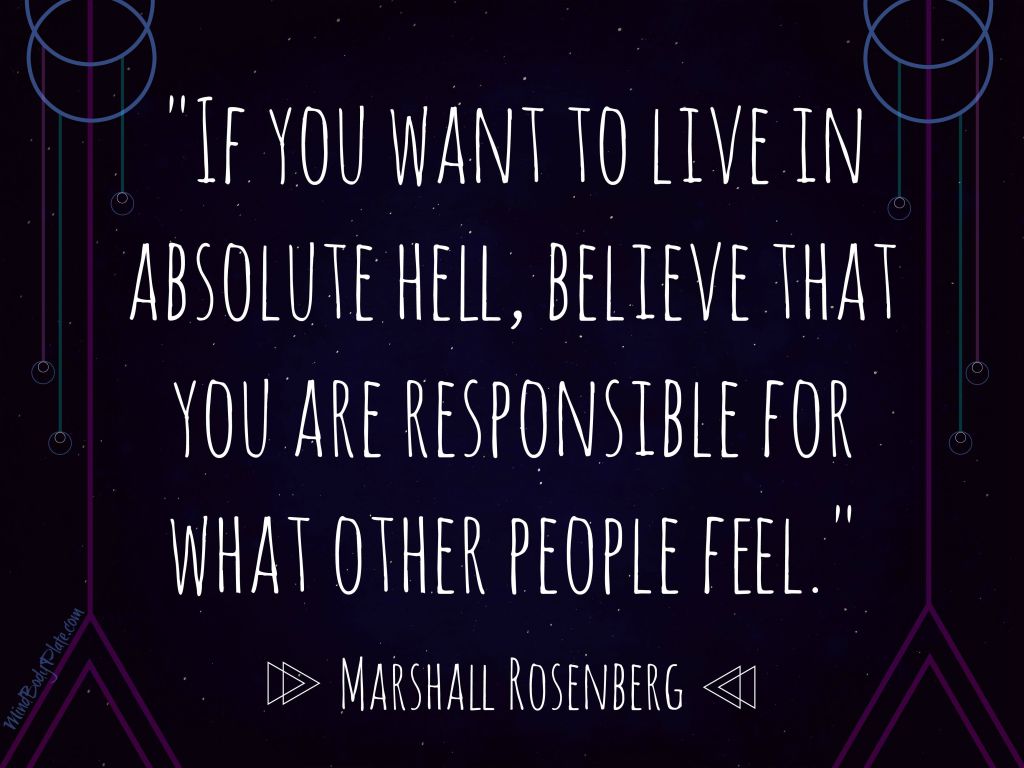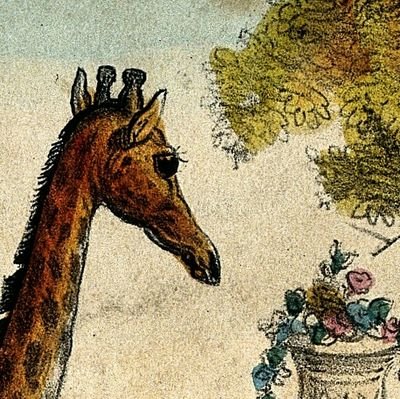What’s Up Next?
|
July 2, 2017 ~ Improvisational Observation
 Improvisation by Childe Hassam, 1899
Improvisation by Childe Hassam, 1899
“To see what is in front of one’s nose needs a constant struggle.”
Inquiry:
How do you cultivate discernment of when/how you are utilizing the four components of Nonviolent Communication: Observation, Feelings, Needs & Requests (a.k.a. “OFNR“)? How do you integrate these into your everyday lives?
Tools: Try taking an incident in which you may have struggled to find an observational way of wording things and do a ‘posthersal’ in which you take what was said and rework, or rephrase it.
For example, “You’re yelling at me!”
Re-visioned, observationally: “When you speak at a volume that is louder than I’m comfortably able to listen to…”
Interpret less, get heard more
See also: Turn your Judgments into gold
|
As I’ve indicated at the @StreetGiraffe twitter account, I consider myself a “heterodox giraffe” — in other words, more of a Nelson Mandela practitioner of Nonviolence (vis-a–vis Nonviolent Communication) than that of an “all in” Gandhi or MLK (shall post on this, to clarify, sometime soon!). Which, at least in some ways, isn’t all that different from how Miki suggests learning how to naturalize:
The second piece is to let go of perfection and to be honest and authentic about the spontaneous truth that lives in me. Eventually I will know how to translate. For now, if I don’t have the agreement, it is better that I speak jackal that is authentic than that I speak NVC that is imposed on you without your agreement and without my authenticity. I much prefer that we speak authentic jackal than distorted NVC look-alike that isn’t real. I hope you take this deep to your heart for the benefit of all beings.” Miki Kashtan via Naturalizing NVC
By speaking in ways that come intuitively and integrating the components of Observation, Feelings, Needs & Requests as seem apropos at the time (something I’ve come to think of as “improvisational OFNR”).
Unlike many of my fellow practitioners, I don’t have an aspiration to move towards ‘giraffe’ without any traces of ‘jackal’ (if this blog were to be more authentically titled, it might be termed ‘street girackal’). I thoroughly enjoy and am often inspired by those who have a more profound commitment to practicing Nonviolent Communication, however for me, it’s one tool in the toolbox (albeit the ethos of the consciousness is something more than this analogy connotes).
Mandela once noted that ones opponent determines the means of one’s resistance and while both Gandhi & King would likely disagree, having sacrificed their very lives to their cause (of Nonviolence), I do suspect that having the Brits or American’s such as JFK/LBJ as an opponent/ally is a difference in kind than having an adversary whose conscience is not as readily appealed to (or moved/shifted through nonviolent resistance). This, of course, comes up for me given the current tumult working its way through the American political scene, all the more acutely given that — as I type — it’s the fourth of July weekend. This call coincidentally began on July 4, 2011 and so the liberating spirit of declaratory oaths has somehow become inextricably linked with my being a practitioner of Nonviolent Communication. Over the ensuing years, I’ve become more at ease with my personal take/practice, and have come to enjoy the inquiry of it, akin to a scientific open-mindedness while investigating the efficacy of a hypothesis.
 By Al8969a (Own work)
By Al8969a (Own work)
So, when I first encountered the brilliant Venezuelan pianist Gabriela Montero, a few years back now, and witnessed her improvisational genius at the keyboard, it struck a chord, pardon the pun. Just as it’s possible to hear remnants of the original melody in her spontaneously inspired creation, it’s likely that I employ the elements of NVC, the four components known as OFNR, but rarely in the template laid out (more sprinkled in, interwoven).
For me, the improv is where the magic happens…
Gabriela Montero Improvisations on a theme offered by a member of the audience
When we are listened to, it creates us, makes us unfold and expand.”
~ Brenda Ueland
The Art of Listening | Zen Moments
Observations, Feelings, Needs and Requests are also four lenses through which we can discern, or listen empathically, to others (in addition to self-expressing). I’ve appreciated this template of the ‘three layers’ by which one can attune to another on ever deepening levels…

Three Layers of Empathy
|
(beneath is courtesy of the work of Jim and Jori Manske) |
THREE LAYERS OF EMPATHY
Empathy is being with another with compassion, connecting to the
humanness of their experience. Empathy is the silent presence
with another, not the words we use. We can express our empathy
and some possible ways to express empathy are included here.
ACKNOWLEDGING another’s experience
Reflecting: Observation, Feeling, Request, and/or Wish
NOT: blame, criticism, or evaluation
“(Something) happened. ”
“You are upset.”
“You wish (something different) had happened.”
“You would like (something).”
Connecting to the CAUSE of the feeling (the need)
Connecting to the universal need/value that the feeling is
reflecting, making no reference to any specific person (including
myself) doing any specific action. Notice there is no reference to
“I” or “me” at the causal level.
“Are you feeling _____ because (need) is important to you?”
“Are you valuing (need)?‘
“So for you, (need) is important.”
Some examples of “need” words: security, cooperation, fun, creativity, love,
respect, freedom, healing, understanding, belonging, awareness, etc.
SAVORING the need
Being with the value of the need.
Connecting to the internal resource and universality of the need.
“Ah, (need)”
Space / Silence
Based on the work of Marshall B. Rosenberg, author of Nonviolent Communication
© 2009 peaceworks, Jim and Jori Manske
Certified Trainers with The Center for Nonviolent Communication
505.344.1305
radicalcompassion@gmail.com
http://radicalcompassion.com
www.cnvc.org
FYI ~ Empathy Layers.pdf
Radical Compassion – Files: Hand-outs, recordings, notes, etc.
|
“The great gift of human beings is that we have the power of empathy, we can all sense a mysterious connection to each other.” ― Meryl Streep |
See also: NVC Dialogue Lab & NVC Reality TV (via NVC Marketplace)
Consciousness Competence Matrix
-
-
David Brooks: Tuners and Spinners – The New York Times
Excerpt: …The tuner makes you feel known. The tuner is good at empathy and hungers for deep connection. The tuner may be bad at small talk, but in the middle of a deep conversation the tuner will ask those extra four or five questions, the way good listeners do… (continues)
-
 Credit: Four stages of competence – Wikipedia
Credit: Four stages of competence – Wikipedia
Courtesy of Radical Compassion – Pathways to Liberation MATRIX
| Pathways to Liberation Self-Assessment Matrix |
Unskilled Unconsciously Incompetent |
Awakening Consciously Incompetent |
Capable Consciously Competent |
Integrated Unconsciously Competent |
| Observing:
Noticing (and possibly describing) our sensory and mental experiences, and distinguishing these experiences from the interpretations we ascribe to them. |
Habitually confuses interpretation with observation; assumes that evaluations and interpretations are facts. | Becoming aware of interpretations as distinct from observations when reviewing past events; little skill or clarity of this distinction when interacting in real time. | Increasingly remembering and making the distinction between observation and interpretation. | Effortlessly able to distinguish observations from interpretations. |
When we find that we don’t know something important, we’re often motivated to learn more. However if we’re blissfully unaware of our ignorance, there’s little we can do about it.
One of the first steps on the journey to acquiring new skills is therefore to be aware of what you don’t know. This discovery can be uncomfortable, as can be the experience of not being very good at what you’re trying to do (as you won’t be, when you first start to learn.)
The Conscious Competence Ladder is a popular and intuitive approach (attributed to many different possible originators) that helps us manage our own emotions during a sometimes dispiriting learning process.
 By Mykl Roventine
By Mykl Roventine
Gabriela Montero describes improvisation as an experience where there isn’t a sense of failure, but/rather an exhilarating sense of freefall, like jumping off a cliff, in which anything can happen…
Gabriela Montero Improvises Bizet’s “Toreador’s Song”
An Arab proverb:
-
“He who knows, and knows he knows,
- He is a wise man, seek him.
-
He who knows and knows not he knows,
- He is asleep, wake him.
-
He who knows not, and knows he knows not,
- He is a child, teach him.
-
He who knows not, and knows not he knows not,
-
He is a fool, shun him.“
-
Via GabrielaMonteroTV: After playing Grieg’s Piano Concerto in A minor with the Orquesta Simfònica Illes Ballears, Gabriela Montero offered an improvised encore on Bizet’s “La Habanera”, as suggested in the moment by a member of the audience. Watch as the theme is taken from the Baroque period, to the Tango salons of Argentina, concluding with a Joplin-esque Ragtime. The improvisation inspired a standing ovation from audience and orchestra alike.
Gabriela Montero: LIVE improvisation on “La Habanera”, July ’16 (Mallorca)
Sharpen your gaze in order to see the signs God shows us in reality.
— Pope Francis (@Pontifex) June 27, 2017
in·cho·ate
-
just begun and so not fully formed or developed; rudimentary.“a still inchoate democracy”
synonyms: rudimentary, undeveloped, unformed, immature, incipient, embryonic;
The idea of a video camera recording what has been said or done is often used, in an NVC context, as a litmus test as to whether something qualifies as an ‘observation’ — something that could be recorded as having been said or done.
However, to be a bit contrarian (as is my wont) — we know from science — that this is not always sufficient (especially in consideration of “that which is alive” — think germs, atomic energy, etc.). In other words, that which is an empirically valid phenomena, one that is consequential to factor into the equation, does not always fall within the realm of the readily visible. One might argue, that it is still a question of observation (more to the point, of instrumentation by which to properly observe), and this is a valid point, however if the intention of noting observation has to do with establishing common ground then it’s worth noting that there is often more complexity to this exploration other than reducing all human interaction to a video camera motif. Case-n-point…
Note the purple CO2 exhausts:
 Wassily Kandinsky’s Improvisation 28
Wassily Kandinsky’s Improvisation 28
So often, what may be most significant or impactful to consider, must be seen within a broader context of discernment. An excellent explanation, grounded in neuroscience, as to how the distinction between observations and interpretations does not fit neatly into that which is always clear cut can be found via Lisa Feldman Barrett | Neuroscientist, Psychologist, and Author directly beneath:
Neuroscientist Lisa Feldman Barrett, author of the book “How Emotions are Made: The Secret Life of the Brain,” shows how the brain constructs an instance of emotion in this brief clip.
Making Emotion (How Emotions are Made)
Lengthier explanation:
C-SPAN.org – Lisa Feldman Barrett, “How Emotions Are Made”
Experts in Emotion 1.2 — Lisa Feldman Barrett on What is an Emotion
Neuroscientist Lisa Feldman Barrett explains how emotions are made
When Is Speech Violence? – The New York Times
By Lisa Feldman Barrett
Imagine that a bully threatens to punch you in the face. A week later, he walks up to you and breaks your nose with his fist. Which is more harmful: the punch or the threat?
The answer might seem obvious: Physical violence is physically damaging; verbal statements aren’t. “Sticks and stones can break my bones, but words will never hurt me.”
But scientifically speaking, it’s not that simple. Words can have a powerful effect on your nervous system. Certain types of adversity, even those involving no physical contact, can make you sick, alter your brain — even kill neurons — and shorten your life… (continues)

Thus, if the distinction between interpretation and observation tends more towards the gray rather than the black/white, it’s valuable to ‘learn to see’ mindfully…
“To see what is in front of one’s nose needs a constant struggle. One thing that helps toward it is to keep a diary, or, at any rate, to keep some kind of record of one’s opinions about important events.” ~ George Orwell: In Front of Your Nose
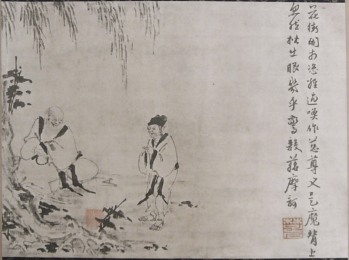 Courtesy of Indara (因陀羅) (Yintuoluo) via Wikimedia Commons
Courtesy of Indara (因陀羅) (Yintuoluo) via Wikimedia Commons
The Gift That Keeps On Giving: Trigger Translation Journal
In 2006, I was introduced by Jane Connor to a practice which Marshall Rosenberg used, and I witnessed him use it through the years I knew him. He kept a 3”x 6” index card folded in half in his pocket, and “he would pull it out from time to time and write down the stimuli that triggered an emotional response in him.” Later, he said, he processed them, trying to understand the feelings and needs stimulated in himself and guessing what feelings and needs the other person in the situation might have been experiencing. As Jane commented, “One of the most important aspects of Nonviolent Communication (NVC) is becoming aware of our feelings and needs and those of the others in the momentthat we are experiencing them.” I have been sharing this practice… (continues)
The Steppingstones of Ira Progoff: Bring Together Past, Present, & Future
All quotes in this article are from Progoff’s book At a Journal Workshop: Writing to Access the Power of the Unconscious and Evoke Create Ability, written in 1975.
“The Steppingstones are the significant points of movement along the road of an individual’s life. They stand forth as indicators of the inner connectedness of each person’s existence, a continuity of development that maintains itself despite the vicissitudes and the apparent shifting of directions that occur in the course of a life. The Steppingstones are indicators that enable us to recognize the deeper-than-conscious goals toward which the movement of our lives is trying to take us.”
“…In Steppingstones, we draw out of the jumbled mass of our life experiences, the thin and elusive connective threads that carry our potentials toward a fuller unfolding.
“…By working with the Steppingstones, we make contact with these elusive lines of continuity that are seeking to establish themselves as patterns of meaning in our lives. ”
See, too: Bill Israel on Progoff
The Progoff Intensive Journal ® ProgramAbout the Method by Ira Progoff |
Inchoate | Definition & Pronunciation of Inchoate by Merriam-Webster
Definition of inchoate
-
: being only partly in existence or operation : incipient; especially : imperfectly formed or formulated : formless, incoherent misty, inchoate suspicions that all is not well with the nation — J. M. Perry
inchoately
adverb
inchoateness
noun
First known use: 1534
In Front of Your Nose – The New York Times
”We are all capable of believing things which we know to be untrue, and then, when we are finally proved wrong, impudently twisting the facts so as to show that we were right. Intellectually, it is possible to carry on this process for an indefinite time: the only check on it is that sooner or later a false belief bumps up against solid reality, usually on a battlefield.” That’s from George Orwell’s 1946 essay ”In Front of Your Nose.”
Gabriela Montero, “Gone with the Wind”
Gabriela Montero – Improvisation on Bach’s Goldberg Variations
Gabriela Montero Improvises “Summertime”
Gabriela Montero, “ExPatria”. A mini-documentary.
I always do! In every interview, every conversation, every radio and TV appearance and from the stage! https://t.co/0NW4okP5FT
— Gabriela Montero (@monterogabriela) June 28, 2017



